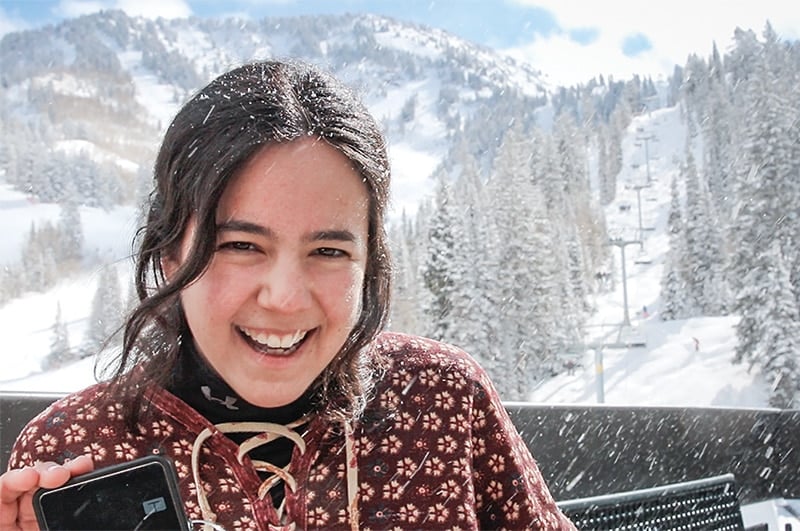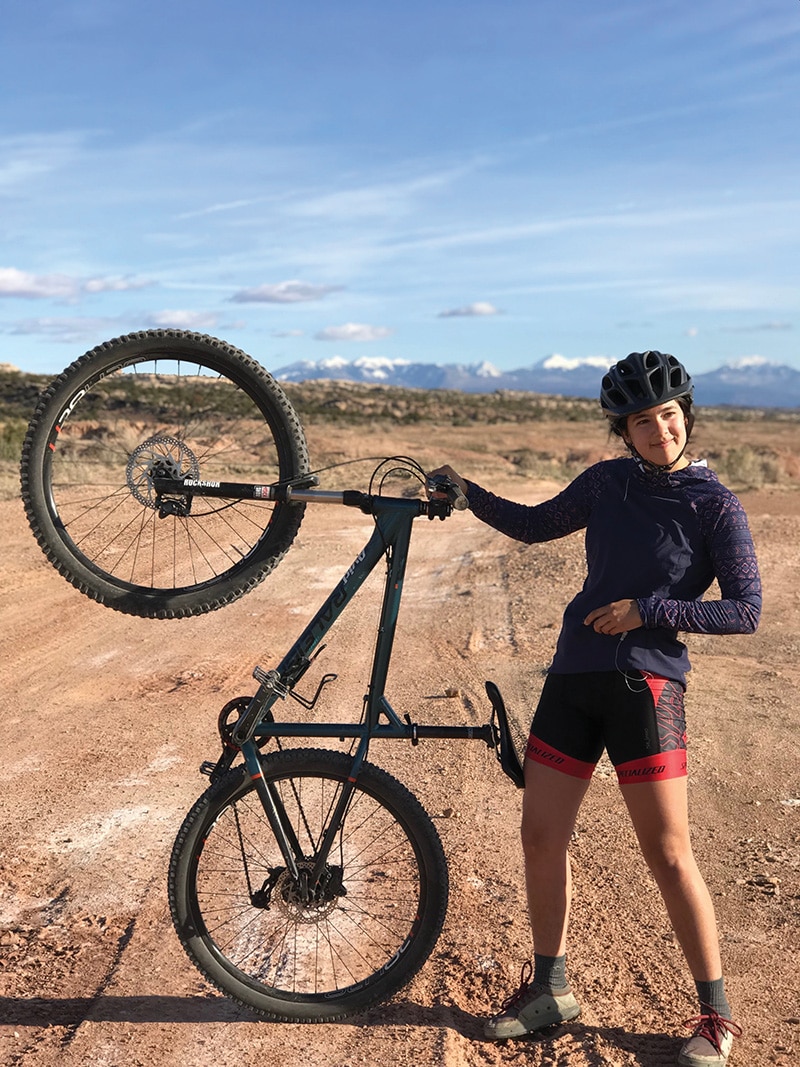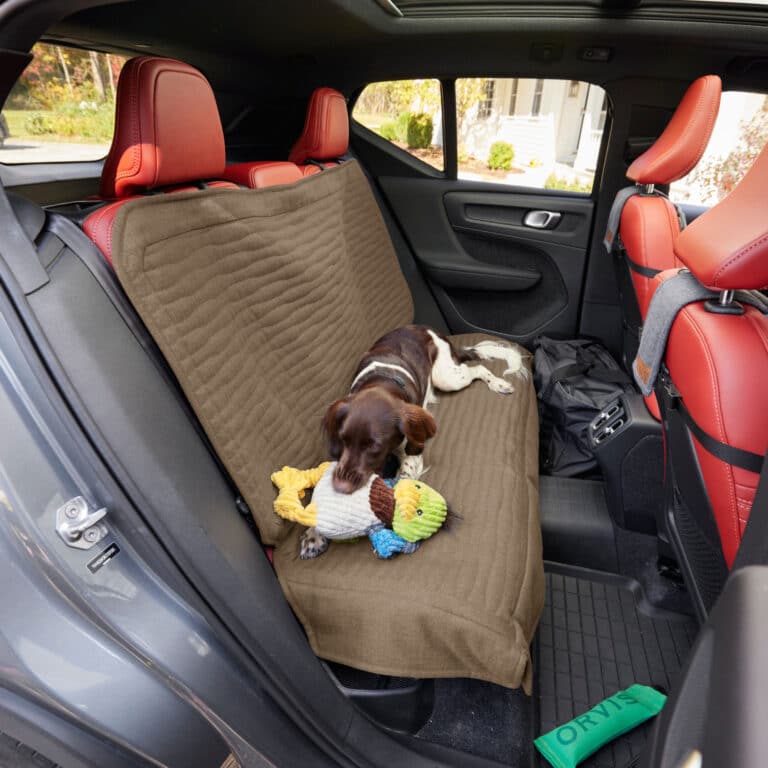“Every time I get outside, I’m owning my Type 1,” says Lubowsky. Photo courtesy Cassandra Lubwosky
Meet Cassandra Lubowsky, aka “The Big Lubowsky,” a lively outdoor guide with experience in just about every outdoor sport: rafting, mountain biking, climbing, backcountry camping, and kayaking. She thrives on challenging herself through adventure, but her greatest challenge of all? Dealing with Type 1 diabetes.
Born and raised on the East Coast, Lubowsky not only found her love for the outdoors in the Blue Ridge Mountains, but also discovered a purpose in life—to help others with Type 1 diabetes feel confident and comfortable outside. “I feel like camping can be your escape,” Lubowsky said. “And that wilderness is the best place to go if you’re feeling overwhelmed. I want to help people discover that.”
Lubowsky learned she had Type 1 diabetes when she was 13 years old. At that point, she had already fallen in love with the outdoors and was now faced with not only adapting to a drastically new lifestyle, but also being told that participating in outdoor activities would be very difficult for her.
Type 1 diabetes is a chronic condition in which the pancreas cannot produce enough insulin. Insulin is the hormone needed to allow sugar (glucose) to enter cells to produce energy. There is no cure for Type 1 diabetes, but it is treatable, with maintenance that includes managing blood sugar levels with insulin, diet, and lifestyle to prevent complications.
High and low blood sugar will affect a diabetic differently along with the rates at which they spike or drop. A big, quick jump in blood sugar can worsen the severity of symptoms and the ability to correct it. Sleep, food, and exercise are all factors that can affect blood sugar levels, so, naturally, adventure pursuits require careful planning and attention for a diabetic.
“I remember a few weeks after I learned about my condition, I had pushed to try out for the soccer team and made it,” Lubowsky said. “I had this weird sense of embarrassment every time I would check my blood sugar on the sidelines. Everyone was telling me I had this condition that was holding me back but it didn’t feel like it was holding me back.”
As Lubowsky began discovering her own inner strength, she credits the love and support she continues to get from her family for helping her through the process. She likes to call non-diabetic people who happen to love a diabetic “Type 3 diabetics.”
“As big as this condition is, it feels so much less lonely when there are people who are thinking about it with you and sometimes for you,” Lubowsky said. “The advice from my dad, the comfort of my mom, and the willingness my sister had to give me insulin shots like eight times a day was huge and made me realize the impact people can have. Sometimes you just want to lay in bed all day. Having someone to just simply sit with you makes a world of a difference.”
With the love and support of her family, Lubowsky decided she would not let her condition consume, her but instead let it bring a purpose to her life in actively practicing self-care and helping others with Type 1 get outside.
A Helping Hand, of Insulin
Lubowsky began exploring how to get more involved in the diabetic community in high school when she worked as a counselor-in-training at Camp Setebaid in Winfield, Pa. “It was the most…diabetic group of people I had ever been a part of,” Lubowsky said, chuckling. “We learned how to feel less strange because we were all diabetic, we were all checking our blood sugars, and all taking insulin before meals. It let us laugh together at the ridiculousness of the relatively mundane yet stressful parts of our lives.”
From there, Lubowsky became a counselor at an outdoor adventure camp for kids with diabetes, Camp Conrad Chinnock, that focused heavily on teaching management of Type 1 while participating in outdoor activities.
“The counselors that slept in the cabins with the kids also had Type 1,” she said. “So we would all get up at 3 a.m. to test our blood sugars. It’s moments like that where we feel more normal and can focus on other things like being excited for the adventure tomorrow offers. I started really thinking about ways I could continue to work with people with Type 1 in the outdoors.”
By the time Lubowsky got to college, she had years of experience helping diabetic kids at camp and wanted to take her guiding skills to the next level. She set out to be an outdoor trip leader at Virginia Commonwealth University’s Outdoor Adventure Program (OAP), taking students on a variety of outdoor adventures ranging in difficulty, an opportunity that she says “was essential in showing me my true capabilities.”
Lubowsky got to explore much of the Blue Ridge as she learned how to lead people on overnight and day trips of all kinds, including mountain biking, rafting, backpacking, and kayaking. As one of her final trips with the OAP, Lubowsky planned a backpacking trip that was near and dear to her heart. She rallied the university’s Diabetes Club and led them on a trip through the Blue Ridge.
“It was amazing to be able to show these people that it is possible to get outside and play with Type 1,” she said. “When we got to the top of the mountain, we all took a picture with our insulin pumps and checked our blood sugars throughout the trip. The rest of the time, we were just a bunch of people having a great time outdoors. Because that’s so much of it. You can keep Type 1 in the background of any life you want.”

Moving Westward
After graduating from VCU, Lubowsky wanted to continue helping people with Type 1 get outside. She moved to Utah to work as a guide for Aspiro, a program that offers short-term, intermediate treatment options for teenagers and young adults by combining outdoor adventure with therapy. Lubowsky now works directly with these participants who are going through difficult or traumatic times in their lives, some of whom are living with Type 1 diabetes.
“I feel that having Type 1 has given me the gift of great empathy,” she said. “I can emotionally be there for my participants when they don’t feel well. Sometimes just listening and sitting with someone is all they need.”
Having Type 1 also helped get Lubowsky in the habit of constantly checking in with herself and the people around her. “As a guide, you have to know how to take care of yourself first in order to properly care for your participants,” she said. “That goes for every guide, not just guides who have Type 1.”
Working for this program has put Lubowsky’s outdoor skills to the test, as the trips explore all of Utah’s dramatically diverse climates and landscapes. One day she could be up in the snow-filled mountains and the next day she’s in a hot and sandy desert area.
“Working a Utah winter while mainly living outside in tarp shelters in freezing temperatures has probably been the biggest challenge being a diabetic so far. The climate out here is really different from the Blue Ridge,” Lubowsky said. “Insulin has a freezing point, and it’s actually not that low.”
While leading a trip in negative 10-degree weather one week, Lubowsky started to notice her insulin pump and meter had stopped working. The cold temperatures had frozen all of her insulin while she was far out in the wilderness. Even though her pump was up against her stomach, her body heat was not enough to thaw the insulin supply. Thankfully, she was able to use hand warmers to warm it enough to start working again.
“It’s been a really long time since I felt like I couldn’t take care of the people around me because I needed to take care of myself,” Lubowsky said. “It was a good check to remind myself that I do still have to be careful and aware that the Earth’s conditions can be unforgiving. ”
Moving Forward
One of the beautiful things about the outdoors is that there is a place for everyone in it. It’s something that unifies us as people while also celebrating individuality. Lubowsky has found her place in helping others find theirs, especially those who feel limited by their Type 1 diabetes.
“You have to be fair to yourself,” Lubowsy says. “A chronic condition like Type 1 is something you have to evaluate every day. Some days you don’t feel like pushing yourself to the limit, and that’s so okay. Every time I get outside, I’m owning my Type 1, packing what I need, and actively making the decision to get outside and do what I love to do.”
When Adventuring with a Diabetic
Safety Talk
Communication is an essential part of Lubowsky’s safety habits. It’s important to be aware of the signs and symptoms of high blood sugar vs low blood sugar, but it’s just as important to ask a diabetic how you can best help them, because everyone is different.
Lubowsky informs the people around her on adventures big or small what her current status is, what to look out for, and how they can help her in emergency and non-emergency situations.
If a diabetic’s blood sugar is out of a range of 80-120, it can be dangerous. Being above or below that range isn’t ideal, but each has consequences and requires different interventions.
High Blood Sugar
Lubowsky describes high blood sugar feeling like “you are walking in water up to your waist.” Having high blood sugar makes blood thicker and pump slower through the body. This leads to extreme fatigue. When this happens, a Type 1 diabetic needs to take their insulin and drink lots of water, but they also need emotional support. Lubowsky stresses that just simply sitting with someone until they are feeling better can make a world of a difference.
Low Blood Sugar
Blood sugar, or hypoglycemia, can drop from exercise like a hike. Low blood sugar calls for carbs and complex sugars to be corrected by consuming juice, gummies, Clif bars, or something similar. If a Type 1 diabetic’s low blood sugar is not addressed, it will continue to drop until they have a seizure or pass out. This situation requires a glucagon injection.
Glucagon
All Type 1 diabetics should have an emergency glucagon kit on them in case of emergencies. The glucagon kit is typically a red, rectangular box with a syringe and vile inside with instructions on how to mix the solution and administer it. Once you have injected the solution into either the fleshy part of their arm or leg, roll them on their side in case they vomit as they come to. Have something high in carbs ready for them to consume and call emergency services immediately.








